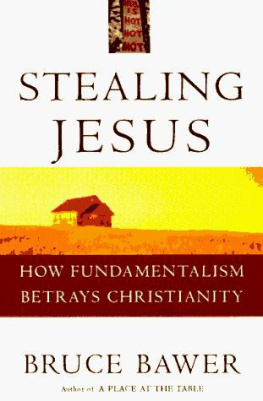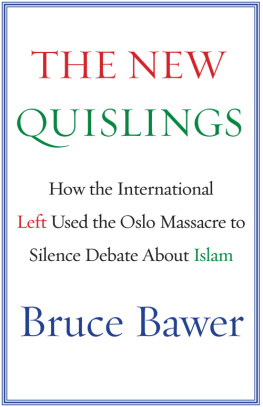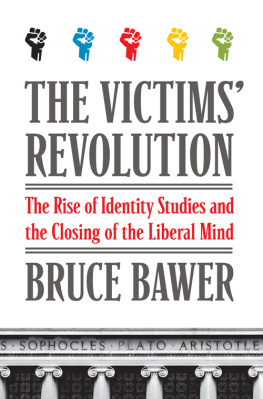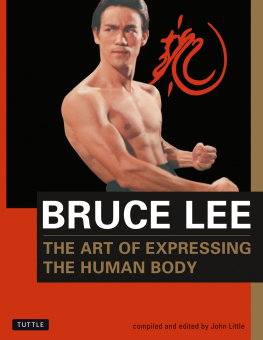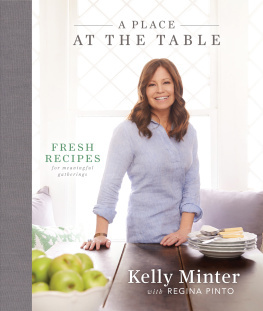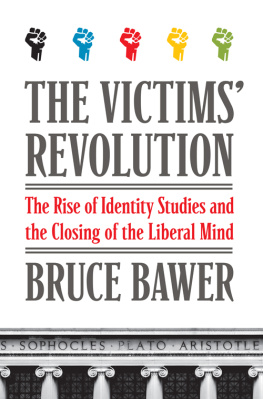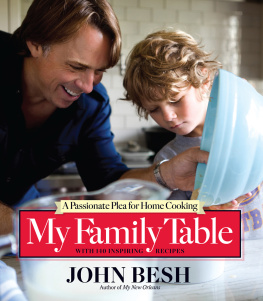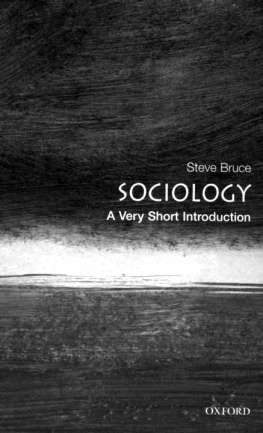Bruce Bawer - Place at the Table: The Gay Individual in American Society
Here you can read online Bruce Bawer - Place at the Table: The Gay Individual in American Society full text of the book (entire story) in english for free. Download pdf and epub, get meaning, cover and reviews about this ebook. year: 2008, publisher: Simon & Schuster, genre: Politics. Description of the work, (preface) as well as reviews are available. Best literature library LitArk.com created for fans of good reading and offers a wide selection of genres:
Romance novel
Science fiction
Adventure
Detective
Science
History
Home and family
Prose
Art
Politics
Computer
Non-fiction
Religion
Business
Children
Humor
Choose a favorite category and find really read worthwhile books. Enjoy immersion in the world of imagination, feel the emotions of the characters or learn something new for yourself, make an fascinating discovery.

- Book:Place at the Table: The Gay Individual in American Society
- Author:
- Publisher:Simon & Schuster
- Genre:
- Year:2008
- Rating:5 / 5
- Favourites:Add to favourites
- Your mark:
- 100
- 1
- 2
- 3
- 4
- 5
Place at the Table: The Gay Individual in American Society: summary, description and annotation
We offer to read an annotation, description, summary or preface (depends on what the author of the book "Place at the Table: The Gay Individual in American Society" wrote himself). If you haven't found the necessary information about the book — write in the comments, we will try to find it.
Place at the Table: The Gay Individual in American Society — read online for free the complete book (whole text) full work
Below is the text of the book, divided by pages. System saving the place of the last page read, allows you to conveniently read the book "Place at the Table: The Gay Individual in American Society" online for free, without having to search again every time where you left off. Put a bookmark, and you can go to the page where you finished reading at any time.
Font size:
Interval:
Bookmark:
Praise forA Place at the Table
COURAGEOUS AND THOUGHT-PROVOKING.
Margaret OBrien Steinfels, The New York Times Book Review
If there is one book about homosexuality and gay rights that everyone should read, it is probably this one.
John Fink, Chicago Tribune
The most significant book on gay politics and culture that Ive ever read.
Gregory King, communications director, Human Rights Campaign Fund
Powerful and important the blockbuster of the season.
Steven Petrow, The Advocate
Bawers well-reasoned, articulate arguments are of inestimable value.
Publishers Weekly
Challenging and compulsively readable tightly reasoned and responsible with a provocative viewpoint that has rarely, if ever, been so effectively in print.
Bob Summer, Lambda Book Report
COURAGEOUS.
Jonathan Yardley, The Washington Post Book World
A quiet, dispassionate voice trying to be heard above the din.
John Heidenry, The New York Daily News
Bruce Bower brings cool reasoning to the heated battlefield of gay rights. Rigorous, eloquent and full of good sense, A Place at the Table is a timely arrival in a debate that needs more reason and less rancor.
Steve Murray, The Atlanta Journal-Constitution
Eloquent. This could be the crossover book many have been waiting forplain and sane talk about a complex issue [that] should be the starting point for all future debate.
Kirkus Reviews
Books by Bruce Bawer
The Middle Generation
The Contemporary Stylist
Diminishing Fictions
The Screenplays the Thing
The Aspect of Eternity
Coast to Coast
A Place at the Table
A Touchstone Book
Published by Simon & Schuster
New York London Toronto Sydney Tokyo Singapore
Bruce Bawer
The Gay Individual in American Society
Bruce Bawer

TOUCHSTONE
Rockefeller Center
1230 Avenue of the Americas
New York, New York 10020
www.SimonandSchuster.com
Copyright 1993 by Bruce Bawer
All rights reserved including the right of reproduction
in whole or in part in any form.
First Touchstone Edition 1994
TOUCHSTONE and colophon are registered trademarks
of Simon & Schuster Inc.
Designed by Karolina Harris
Manufactured in the United States of America
10 9 8
Library of Congress Cataloging-in-Publication Data
Bawer, Bruce, 1956
A place at the table : the gay individual in American society /
Bruce Bawer.
p. cm.
1. HomosexualityUnited States.
2. GaysUnited States.
3. Subculture.
I. Title.
HQ76.3.U5B39 1993
305.389664-dc20 93-5798
CIP
ISBN: 0-671-79533-3
eISBN: 978-1-4391-2848-0
ISBN: 978-0-6717-9533-7
0-671-89439-0 (pbk)
FOR CHRIS
Let us build an American home for the twenty-first century where everyone has a place at the table and not a single child is left behind.
President-elect Bill Clinton January 17,1993
This book is a reflection on the theme of homosexuality. I have written it because the current debate on homosexuality and gay rights has generated a lot more heat than light. Most of what is being said on the subject seems to me terribly wrong, and many of the people who are doing the loudest talking appear to have a vested interest in perpetuating discord and misunderstanding.
Because my sense of what it means to be gay derives largely from my own experience, this book is, in part, autobiographical. Furthermore, since it is essentially an attempt to correct the misperceptions that underlie certain widely held beliefs and oft-repeated arguments, it contains many quotations from recent magazine articles, newspaper op-eds, and television interviews in which those attitudes and arguments have been presented.
The books first section offers an overview of recent social and political developments relating to homosexuality and gay rights, and puts those developments in historical and moral perspective. The second section scrutinizes the positions of those who criticize homosexuality or gay rights; the third examines the gay subculture and its premises; the fourth considers the dilemma of the gay individual and his problematic relation to both the mainstream culture and the subculture.
What word to use? If to many gays homosexual sounds like a clinical diagnosis, to many heterosexuals gay sounds like a political statement. Simply for varietys sake, Ive chosen to use the two words interchangeably, both as nouns and adjectives. When speaking of homosexuality in pre-modern times, however, Im inclined to refrain from using the word gay, because it reflects a contemporary awareness of sexual identity that seems anachronistic when one is referring to, say, Socrates or Caravaggio or Richard the Lion-Hearted. I also tend to favor gay when discussing subculture-oriented individuals and homosexual when discussing individuals who are more mainstream-oriented. Ive chosen not to use the word queer, which is favored by some gay activists and academics but turns off almost everybody else, gay and straight.
Though much of this book will be seen to apply equally to gay men and women, a great deal of what I have to say will not strike many lesbians as being particularly relevant to their lives. This cant be helped. One reason is that there are, I think, innate differences between male and female sexuality, and consequently innate differences between male and female homosexuality; another reason is that for many lesbians the issue of homosexuality is tangled up with the issue of feminism, which is another ball game entirely. In any event, my emphasis on male homosexuality certainly shouldnt lead anyone to think that I dont feel lesbians also deserve places at the table.
Nor, in criticizing the monolithic aspects of the gay subculture and pointing out that the most easily identifiable gays are not representative of the homosexual population at large, do I intend to suggest that those particularly visible and identifiable gays are any less deserving than anyone else of respect and equal rights or to suggest that those who conform in one way or another to the subcultures prescriptions should be considered thereby to have forfeited their places at the table.
For their advice and moral support, I am grateful to several friends: David and Linda Attoe, Gloria and Will Brame, Stephanie Cowell, Rhoda Croft, Marge Danser, Tom DePietro and Dorothy Heyl, Dana and Mary Gioia, Lenny Hort and Laaren Brown, Brendan McEntee, Sally McGaughey, Carol Saltus, Judy White, and Harriet Zinnes. Thanks also go to these family members: Charlotte Davenport, Carol Bawer, Marsha and Aldo Greco, Ruth Cook, and Helen Sicora. I am fortunate to have had the opportunity to work with an extraordinarily gracious and sensitive editor, Elaine Pfefferblit; with her delightful assistant, Laura Demanski; with a marvelous agent, Molly Friedrich; and with Seale Ballenger, to whom I am indebted for his valuable comments and suggestions. My greatest debt is to my companion, Chris Davenport. This book grew out of countless conversations that weve had over the last few years and is almost as much his as it is mine. Finally, I thank my parents, Ted and Nell Bawer, for their unwavering interest in this project and their envelopes full of clippings. More than anyone or anything else, their love and support have animated my hope in the ultimate triumph of reason over irrationality, acceptance over estrangement, love over loathing.
Next pageFont size:
Interval:
Bookmark:
Similar books «Place at the Table: The Gay Individual in American Society»
Look at similar books to Place at the Table: The Gay Individual in American Society. We have selected literature similar in name and meaning in the hope of providing readers with more options to find new, interesting, not yet read works.
Discussion, reviews of the book Place at the Table: The Gay Individual in American Society and just readers' own opinions. Leave your comments, write what you think about the work, its meaning or the main characters. Specify what exactly you liked and what you didn't like, and why you think so.

